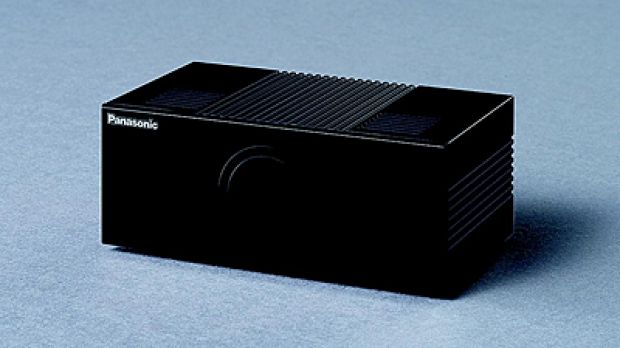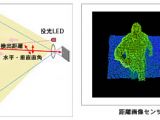Sensors that automatically count all the people that go through one area at any given moment? Gaming machines that actually "read" the gamers' movements without forcing them to wear any accessories? Robots that detect when people are approaching them? You might think that you only see this kind of stuff in SF movies, but the truth of the matter is that it could all become reality in the very near future, due to the fact that Panasonic Electric Works has just developed a 3D sensor that is actually able to function quite well even in broad daylight (or, to be more scientific about it, in environments with a luminance level of up to 100,000lux).
This highly innovative sensor from Panasonic has a resolution of 160 x 120 pixels, as well as viewing angles of 50 and 36 degrees, respectively. According to the company, two different models have been developed – one provides a measuring range of 1.0-1.5m and a response speed of 20fps, while the second delivers a measuring range of 0.4-1.2m and a response speed of 56fps.
This is by no means Panasonic's first foray into this particular field, but rather a follow-up to a technology developed as early as 2005. Back then, the Japanese company came up with a "distance image sensor" capable of irradiating a signal light on the measurement target and observing the reflected light, but which only worked in environments where the level of light was around 3,000 lux or lower, pretty much the equivalent of a night lamp. However, the new sensor solves this issue by removing the amount of the electric charge corresponding to that generated by the ambient light from the charge generated in the photosensitive unit.
Now, when one hears the word sensor, one might think of a tiny electronic component inserted within another device. However, that's not the case with this particular product, which measures 150 x 60 x 80mm, weighs 740g and operates on a 24V power source.
The first 3D sensors will become commercially available at some point in the spring of 2009, and the Japanese company hopes to sell at least a few million units, which means that, towards the end of 2010, products using this highly-advanced technology might be available pretty much everywhere.
We are just a few, but there are many of you, Softpedia users, out there. That's why we thought it would be a good idea to create an email address for you to help us a little in finding gadgets we missed. Interesting links are bound to be posted with recognition going mainly to those who submit. The address is  .
.

 14 DAY TRIAL //
14 DAY TRIAL // 
